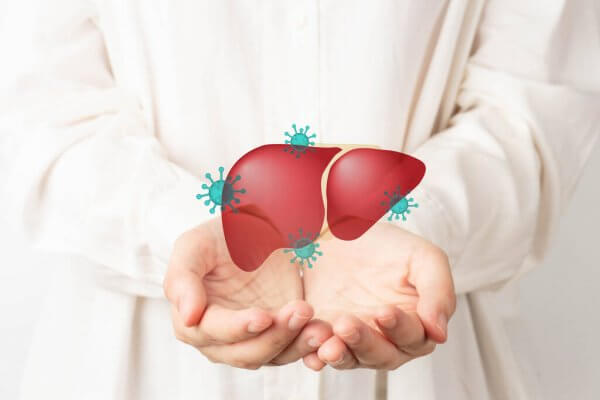An enlarged liver is an abnormal enlargement of the liver caused by acute disease. Enlarged liver is not a disease but rather a symptom indicating a chronic stage of a disease such as cancer, cirrhosis, or fatty liver disease. The medical term for this condition is known as Hepatomegaly.
The liver is considered the master organ because of its ability to perform various tasks, including toxin removal, hormone and cholesterol regulation, and fat metabolism.
The liver is a vital organ with abilities to regenerate lost parts. According to the Canadian liver foundation, the liver has over 500 functions, and failure of the liver to function correctly can affect the performance of other organs in the body.
In this article, we will explore the potential causes, symptoms, and symptoms of Hepatomegaly.
What causes an Enlarged Liver?
One significant truth about an enlarged liver is that it’s not a disease on its own but a symptom of chronic liver disease. The causes of an enlarged liver differ from one patient to another.
A Series of frequently diagnosed medical conditions that can cause an enlarged liver includes:
Hepatitis
Hepatitis is an inflammation of the liver caused by either a viral infection, drug abuse, or alcohol-induced liver damages. A viral infection is the leading cause of hepatitis. The three main viral classifications of hepatitis are hepatitis A, B, C.
According to the Centers for Disease Control and Prevention (CDC), more than 5 million people in the United States live with chronic Hepatitis B or chronic Hepatitis C, with approximately 43,000 and 1700 new cases each year, respectively.
Alcoholic Liver Disease (ALD)
Alcoholic liver disease, also known as alcoholic steatohepatitis, is caused by excessive alcohol consumption. This condition is brought about by the buildup of fat cells in the liver, promoting liver inflammation, decreased functionality, and performance.
According to the National Institute on Alcohol Abuse and Alcoholism, alcohol is the fourth leading cause of preventable death in the United States, with approximately 88,000 new cases each year.
Chronic cases of Alcoholic liver disease will weaken the body’s natural defense and lead to alcoholic hepatitis and cirrhosis.
Liver Cancer
Cancers of the liver fall into two significant classes called primary and secondary liver cancer. Primary liver cancers are cancerous cells originating from the liver. In contrast, secondary liver cancer appears as Metastasis, such as colon cancer, Lymphoma, or lung cancer that spreads from other organs to the liver.
According to the Center for Disease Control and Prevention, approximately 16,000 men and 8,000 women die from liver cancer annually.
Nonalcoholic Fatty Liver Disease (NAFLD)
Nonalcoholic fatty liver disease causes steatohepatitis without being caused by excessive alcohol consumption.
According to a publication by Robert Wood Johnson Foundation (2016) in the Trust for America’s Health, an estimated 100 million people live with nonalcoholic fatty liver disease in the United States.
This disease is triggered by medical conditions such as diabetes or consuming a diet high in cholesterol and fat.
Enlarged liver symptoms
An enlarged liver isn’t often a cause for concern and causes no symptoms; however, symptoms are noticeable if an underlying medical condition is responsible for the inflammation. If you experience any of the symptoms below, contact your healthcare provider for a proper diagnosis.
- Fatigue
- jaundice, or yellowing of the skin and eyes
- Nausea and vomiting
- muscle aches
- itching
- abdominal pain or mass
- weight loss
- poor appetite
- swelling of the feet and legs
- shortness of breath
Some symptoms of enlarged livers are considered medical emergencies. Ensure you take and observe dosage recommendations of prescribed drugs.
Diagnosis
Your doctor may conduct a physical examination by lightly touching or tapping the abdomen to check the size or determine the liver’s sensitivity. Your doctor may order a blood test or imaging tests such as a CT scan and MRI to check liver enzymes and signs of infection.
A small liver sample can undergo examination using a microscope through a process known as liver biopsy.
Treatment
Treatment of an enlarged liver requires diagnosing the underlying cause of the condition first. The underlying condition determines the course of treatment.
For mild conditions, simple lifestyle changes such as eating a healthy diet, increased physical exercise, eliminating alcohol can help improve the situation. For chronic conditions, your doctor will recommend the appropriate treatment course based on his diagnosis.
While a healthy lifestyle and diet can keep the doctor away, it is essential you know when to visit your doctor for a professional consultation.


